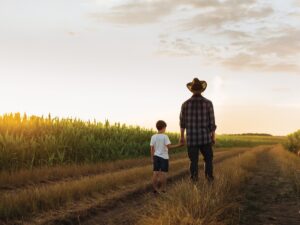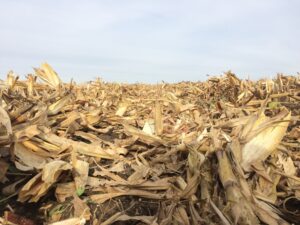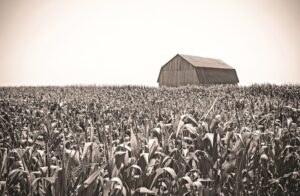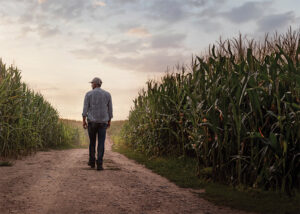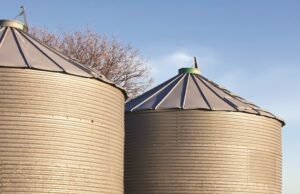Leading up to harvest
PREPARATION IS KEY
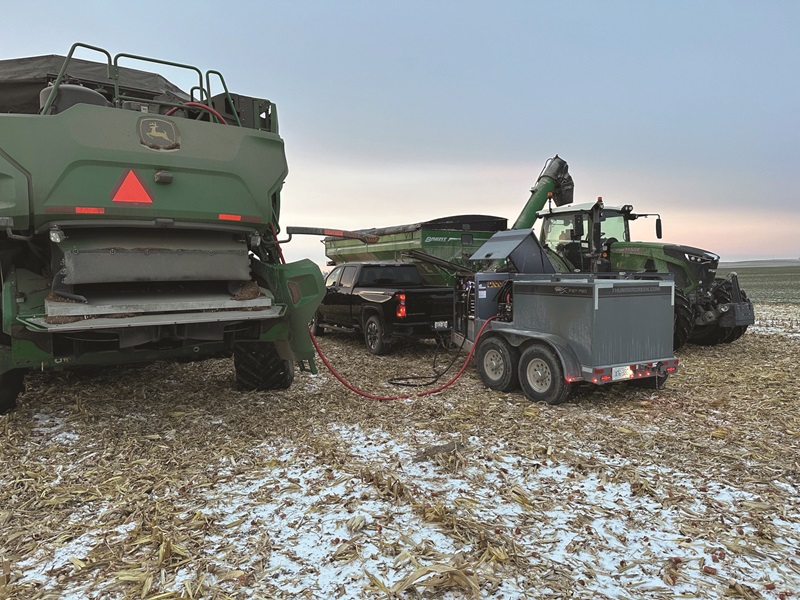
THE MODERN-DAY REALITY IN AGRICULTURE ACKNOWLEDGES THERE IS NO LONGER ONE TIME OF YEAR THAT IS BUSIER THAN ANOTHER. Even winter, long considered the “downtime” for growers, now carries the opportunity for upgrading and learning.
Yet, fall harvest is when planting, spraying, and monitoring culminate in revenue earned, testing the lessons learned and incorporated during the other seasons. Arguably, it makes the fall harvest that much more important, which is why being ready for it takes on an added significance.
To borrow a phrase that has become part of the industry’s jargon, growers need to “work smarter, not harder.”
SIZE IS IRRELEVANT
It’s easy to default to the notion that a larger farming operation – or one with grains and oilseeds and livestock or poultry – has a greater challenge than something smaller, but it comes down to managing and finding efficiencies. At least that’s the case for Eric Dietrich, whose family farms near Lucan. He is part of the third generation on their operation, along with his brothers Grant and Jake, who are partners with parents Krista and Hugh. They grow corn, IP soybeans, winter wheat, a small amount of winter barley, and some edible beans, and in recent years, they’ve been working with double- crop buckwheat and soybeans. For Eric, preparing for harvest means determining the efficiencies on their farm and driving productivity.
“We want to maximize our equipment capability and achieve our economies of scale,” he adds. “We run a lean team compared to most other (farm operations), and we run a lean equipment line for what we get across. It’s a matter of organization and a lot of preparation; every move we make, we’re trying to be productive.”
When it comes to preparations, Eric says they try to stay three steps ahead of the current season, meaning they’re already working towards soybean and corn harvest as they are taking off their grain.
“We try to put it away ready,” he notes. “There’ll always be a few things to fine- tune, but it comes down to the combine, the harvest equipment, and the elevator; we’re always thinking of our next move.”
Each family member has a specific role on the farm, as well. Each is capable of doing any of the jobs, yet each has a specialty. For example, Eric drives the combine and the corn planter, which means he’s responsible for maintaining those two implements. Although there might be one or two other employees or one of his brothers who can help him blow-out or make repairs to the combine, he has to take the lead and ensure either of those is ready to go when needed.
Also, there is no such thing as privilege with their farm; there are “good” jobs, and there are “dirty” jobs, but as Eric notes, family members and employees take their turns. It is that dedication and organization that enables them to get more accomplished.
“We have certain individuals who are young and keen to put in the hours, and they take responsibility well,” says Eric. “They enjoy what they’re doing, and they’re excited, and they’re invested, time-wise.”
COMPETING PRIORITIES
Organizing and delegating tasks is also a hallmark with Ian and Scott Matheson, who farm an extensive operation near Lakeside, south of Stratford.
Theirs is a complex blend of 1,600 to 1,700 acres of their own cropland, two 350- to 400-sow farrow-to-finish operations, and a 50-cow dairy farm. Their rotation is corn for one or two years, then soybeans, then either winter barley followed by double-crop soybeans or winter wheat and then back to corn. If all that isn’t challenging enough, they also provide custom work and have a crop input business.
Defining “working smarter, not harder” isn’t easy for Ian, who says he and Scott try to stand back and look at things from a business perspective versus a traditional, “this is how we’ve always done it” or “this is what someone else says we should do.”
“Sometimes, outside the box or against the grain is a better fit,” adds Ian. “And some days, it’s just an uphill battle no matter what.”
Unlike the Dietrich’s operation, the Mathesons don’t prepare for fall harvest during the summer; all the work is done after the fall harvest and during winter. Summer is their busiest time of year with barley and wheat harvest, cover crops and double-crop planting, sprayers running constantly, and the daily demands of their livestock.
“By the time the fieldwork slows down in mid-August, everyone tries to get a bit of a breather before soybean harvest ramps up in September, although it’s still difficult to pull back,” says Ian. The demand for seamless operations is eased by the four full-time and five or six part-time workers they have.
“We’re fortunate to have very qualified people who we’re able to delegate taking care of, not only a task but taking the lead amongst a group and are understanding of what the season can consist of.”
As challenging as keeping machinery tuned and ready, there’s also the complement of precision ag machinery the brothers employ. They use a robotic milking system on the dairy farm, data-driven feed information on the pork side, plus yield monitors, variable- rate applications, and satellite imagery, which makes for a very full plate, technology-wise. But Ian insists they’re still trying to maximize the data and information they can retrieve. As precision ag technology continues to evolve at a rapid pace, it’s easy to become overwhelmed, if lost, altogether. And since they are not quite maximizing what they have in front of them – yet – they are not about to go looking for more.
SMALL PLOTS, BIG CHALLENGES
Size can be a misleading factor in assessing management and efficiency. Just ask Greg Wilson. In 2016, he and his wife, Jolene, started BlackCreek Research, an independent research farm near Plattsville.
The complex nature of what they do has demanded a premium on organization, with roughly 200 acres featuring corn, soybeans, and wheat along with dry beans, dry peas, lentils, spring cereals, and almost any vegetable crop known to Ontario. In addition to Greg and Jolene and their four children, they have six full-time staff, seven university students, and one high school student working for them.
Despite their farm’s smaller size, it’s how those 200 acres are used that makes things especially challenging between managing employees and maintaining research plots in a wet year like 2024.
“Growing up, it was, ‘put your head down and get the job done,’ and there are days that I still have that mentality,” says Greg. “However, with research, you have to be patient and take the time to get things done correctly. That might mean taking two hours to plant an eighth of an acre for a corn or soybean trial or taking three hours to count Colorado potato beetle larva.”
When he started BlackCreek Research, he had to make sure they had the right equipment to do the job correctly. That might mean using a 1940s beet lifter to harvest sugar beet trials, but it was better than digging them by hand. It may not be a typical grain operation, but there are many similarities.
“We’re on the small but detailed side of things, looking for a 10 per cent difference in weed control between two rates of the same experimental product,” he says. “But regular [grain farming] is very similar with all the details of maximizing your yields, improving soil health, reducing the environmental impact, and reducing input costs while trying to make it home every night to see the family.”
Preparing for harvest actually starts at the end of December when they have their research-designed combines checked over as early as possible. Greg knows he’s fortunate to have mechanics willing to work on small, older John Deere combines or research plot combines. For all machines, they try to have the most common belts, bearings or other parts that wear or break on the shelf, just in case.
“For the plot combines, you can be waiting for months for a belt to come from Europe, so we try to have everything checked over and as field-ready as possible, long before winter wheat is ready to harvest,” he says.
“The wheat crop is a good test to make sure everything is ready to roll for dry beans, soybeans, and corn.”
Fall harvest can also present some intriguing challenges for the next growing season, as Greg found out last year when his sprayer broke down, with a month’s downtime. One site that had heavy chickweed pressure during winter wheat planting provided a herbicide trial for chickweed, but the rest became an eyesore, making residue management in the fall key to improving efficiency the following spring. •






